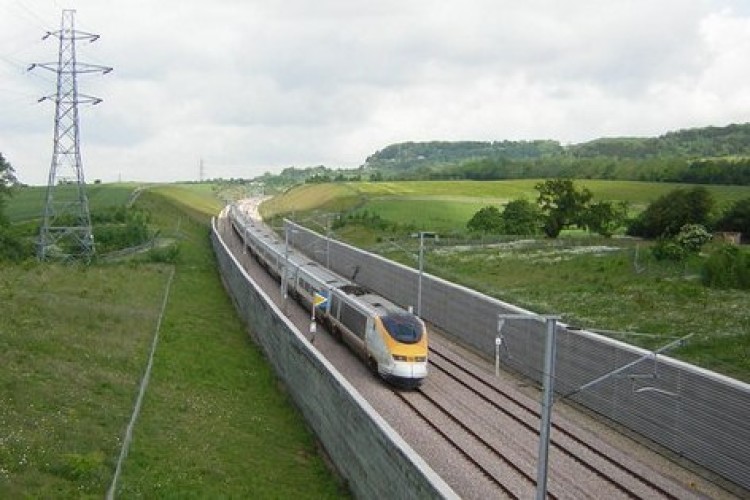The Channel tunnel rail link, as it was then known, was 18% over its construction budget and is delivering only two-thirds of the forecast passenger traffic.
The National Audit Office (NAO) has today published a report on the construction and sale of the HS1 London to Channel tunnel line.
The NAO says that HS1 has delivered a high performing line, which was subsequently sold in a well-managed way that removed the taxpayer's open-ended support for the project. However, international passenger numbers are falling so far short of original forecasts that project costs exceed the value of journey time saving benefits.
The line was delivered within the overall funding and timescale available for the project. However, this was at a higher cost and later than its targets. Construction of the line cost £6,163m, 18% higher than the target costs. Despite missing these targets, this performance compares well with other railway projects, the NAO says. (The West Coast Main Line upgrade was £6bn - 240% - over budget and four years late.)
The NAO says total cost to the taxpayer is higher than originally expected because the Department is now responsible for servicing and repaying the project debt. It estimates that net taxpayer support may reach £10.2bn (present value to 2070, in 2010 prices).
The value of journey time saving benefits lies in the range £6.1bn to £7.7bn – significantly below cost. However, the NAO said it had not been able to measure wider economic benefits such as regeneration and improvements to train services on other lines, which should also be factored in to a cost benefit analysis.

HS1 has performed well since it opened, with only 0.43% of services being delayed in 2010-11 by infrastructure incidents, such as track or signal failures.
However, the number of international passengers using the line is lower than originally forecast. Actual passenger numbers between 2007 and 2011 were, on average, two thirds of the level forecast when the Department for Transport (DfT) guaranteed the project debt in 1998, to enable the line to be built. This left the taxpayer exposed to the risk of lower-than-expected passenger income, which had been expected to repay the project debt.
London & Continental Railways Ltd (LCR), which is owned by the DfT, is in partnership with private sector developers at King's Cross and Stratford where development is under way. The original business case in 1998 was based on benefits to transport users from faster journey times and increased rail capacity and regeneration benefits. According to today's report, the total value of these benefits is not known as the DfT has started to identify the methods it will use to evaluate the project's costs and benefits. The DfT has not reassessed these costs and benefits since 2001, despite assurances to the Public Accounts Committee that it would do so.
In restructuring LCR before the sale, the DfT removed open-ended taxpayer support and made the line an attractive opportunity for investors. The NAO says that the DfT handled the sale well and, at £2,048m, the winning bid was higher than expected.
NAO head Amyas Morse said: "The High Speed 1 project has brought a number of significant benefits including quicker journey for passengers. However, the project went forward on the basis of hugely optimistic assumptions about international passenger numbers. These were not realised and the Department is only now developing its plan to evaluate whether the project was value for money."
The full NAO report is available online here.
Got a story? Email news@theconstructionindex.co.uk



